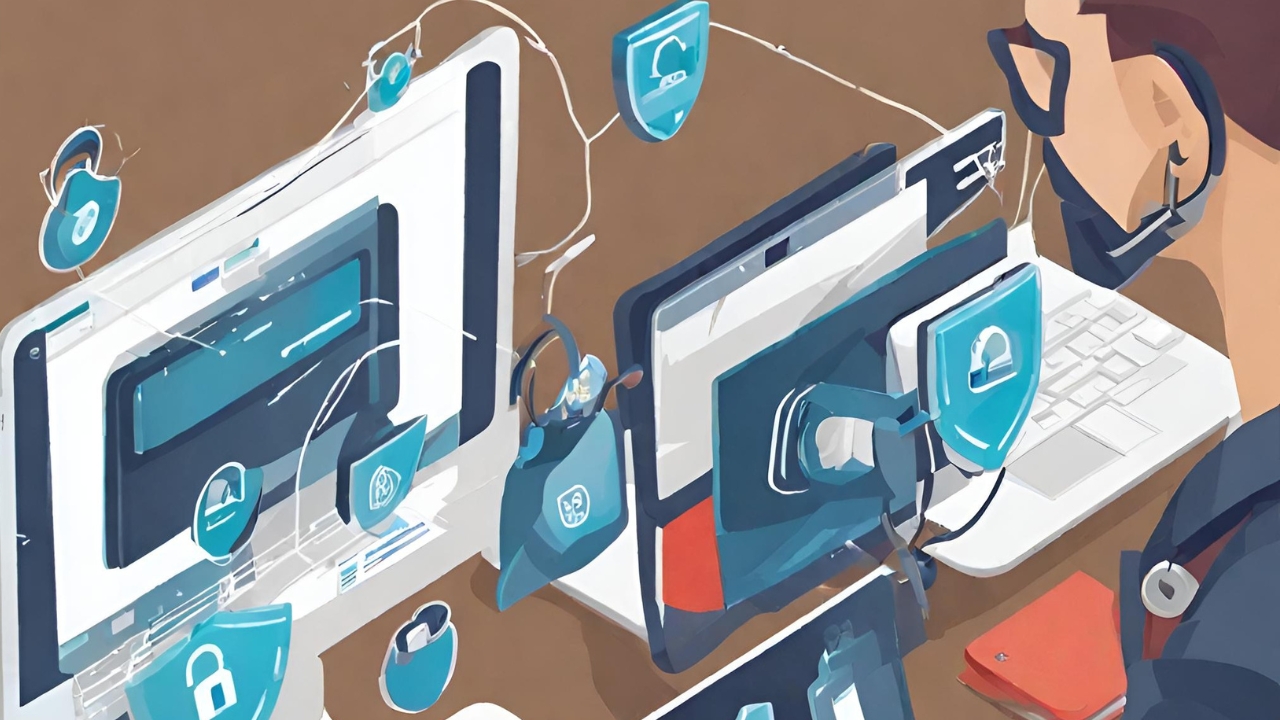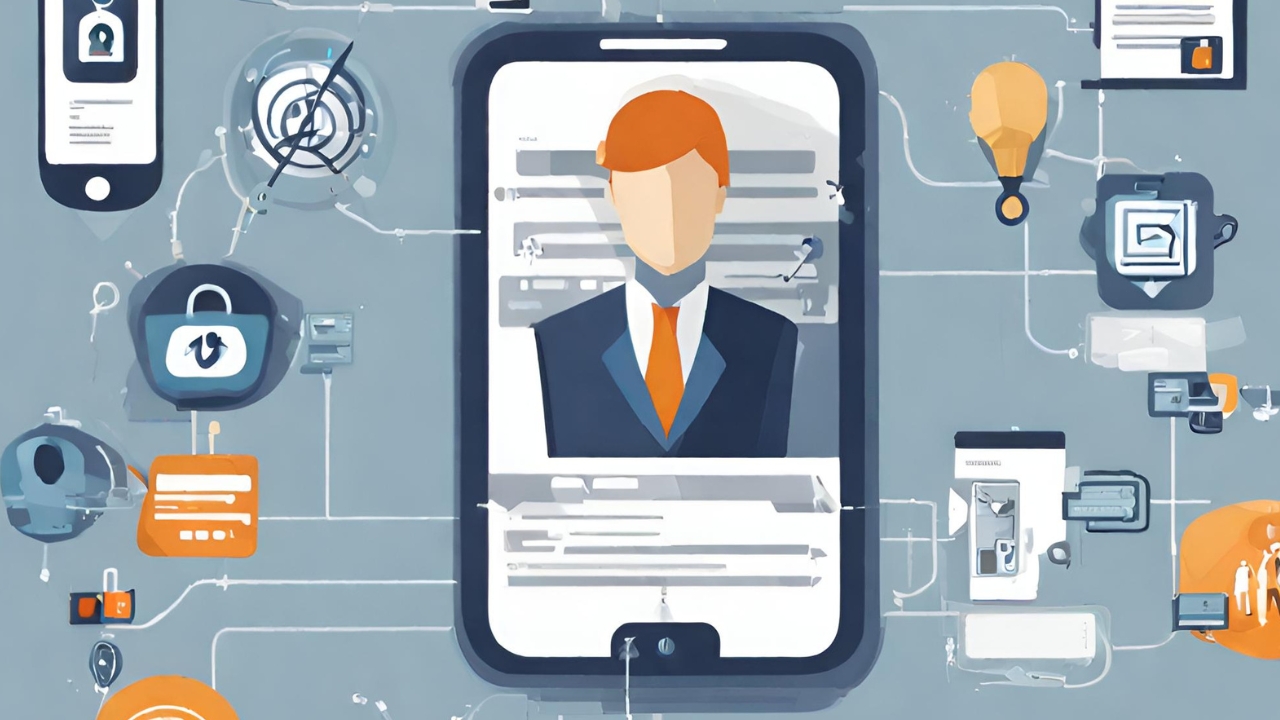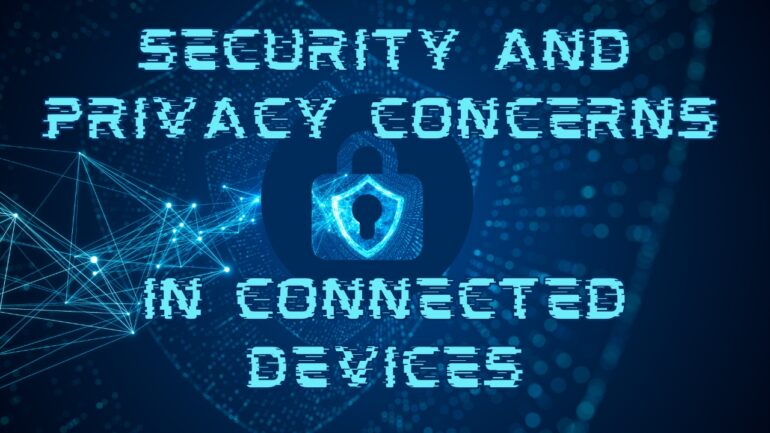The Internet of Things is becoming more pervasive, increasing security and privacy problems. Even seemingly harmless statistics may want to prove touchy in certain contexts; moreover, there may be questions concerning client management over devices.
Data collected by smart devices is often shared without consumer consent or know-how, posing serious privacy and attention concerns. Here are some key issues.
Data security privacy

With such a lot of related devices occupying our lives, it is increasingly critical to evaluate how secure our privacy is, from cloud garage and app permissions to third-party device manufacturers compromising your information.
Hackers have been recognized to benefit from entry to protection cameras and use them regularly for illicit surveillance of unsuspecting people within their houses without them knowing it.
Such violations may be averted with proper precautionary measures.
Many individuals are worried about how much personal information their clever gadgets gather around them.
Companies usually collect more information than necessary for product services and might promote these records without customers’ understanding or consent – this collection of personal information may additionally be accepted as true with problems that save you, humans, from the use of devices, doubtlessly even those they choose themselves.
One answer could be for businesses to accumulate critical records important for product capabilities; this can lessen risks associated with records breaches, even as constructing customers agree with in merchandise.
In addition to restricting how a lot of statistics is gathered through every tool, strong encryption is used to guard sensitive facts stored within them.
Data Collection and Usage
Data series helps tech teams accumulate insight into end-person behaviors and wishes, offering facts that may tell product improvement, customer support, advertising, marketing, and sales choices.
However, hackers may also use the gathered information for unlawful reasons, which include identification, robbery, and blackmail.
IoT gadgets use diverse approaches to acquire records, including sensors, Wi-Fi communiqué technology, and cloud storage.
Smart home devices can also use sensors to simultaneously gather temperature and humidity records, as movement-activated cameras might also seize visible records via cameras.
Devices connected to the Internet may additionally transmit their records over numerous networks like LTE-M (Long-Term Evolution for Machines), Wi-Fi, and Ethernet networks.
Connected gadgets collect personal facts, consisting of region facts and fitness-associated details.
This information can be compromised and used by entrepreneurs or maybe regulation enforcement authorities to tune a person’s sports or even reveal private behavior and feelings that discriminate towards marginalized populations – for instance, in step with Consumer Reports research performed using anonymized cellular smartphone area data bought via a chief generation agency for tracking functions against an obvious Catholic priest who frequented gay bars and mobile courting apps.
Identity Theft and Fraud

Identity theft and fraud are critical threats in the modern digital global, as criminals use stolen facts to advantage entry to different gadgets, dedicate monetary fraud, or impersonate human beings – mainly to misplaced money or services, compromised credit score bills, or bank debts as well as stolen identities being impersonated.
This may have disastrous outcomes for victims who fall prey to fraudsters who use their stolen credentials for identity robbery and fraud schemes.
Unsecure IoT devices gift hackers with a super opportunity.
Hackers can experiment with a community for nonstandard ports that allow them to mine or download malware onto linked devices – giving hackers access to domestic and workplace networks, recruiting IoT devices into botnets used for DDoS attacks and different types of mischief, or recruiting IoT gadgets into botnets used for other forms of crook sports.
Individual and corporate vigilance and stringent policies are crucial in the fight against identity robbery and fraud.
While avoiding those crimes is impossible, we will lessen the threat by using stable e-mail debts, password managers, and robust authentication techniques in conjunction with choosing producers/answer vendors who prioritize protection.
Lack of Regulation
As the era becomes a vital part of our lives, there is a pressing need to deal with essential privacy concerns. Unfortunately, modern-day security and privacy regulations have not begun to seize up with the IoT generation.
Though linked gadgets provide many blessings, they also pose severe safety threats from hackers and different types of assault if not nicely included.
A hacker ought to exploit vulnerabilities in IoT devices to screen and harass victims of home abuse.
Manufacturers have begun to address those demanding situations by way of investing in IoT security, with investments growing considering a new law, which includes the California Consumer Privacy Act (CCPA) and Oregon Cyber Resilience Act, came into pressure, setting stringent requirements on IoT tools makers with a purpose to in all likelihood cause more potent facts safety features that hackers cannot take advantage of.
Third-Party Access
Many devices, including cellular phones and laptops, allow users to install 1/3-party packages, so one can get admission to and adjust device records and configuration settings – this poses both privacy and security dangers; if an app becomes compromised, it could compromise both gadgets.
Third-celebration entry is an ever-increasing threat for corporations of all types and sizes, yet monitoring third-celebration structures to ensure they adhere to a corporation’s regulations and policies may be difficult.
Furthermore, companies usually own small data protection groups, which leads them as easy targets for attackers looking to penetrate tremendously included networks.
Organizations should secure 0.33-birthday celebration get right of entry to their gadgets and networks by using a privileged get right of entry to control answer that gives visibility, management, and compliance reporting.
This will allow groups to manage 1/3-party connections without impacting device performance or security during assaults – particularly vital in instances while being able to pause, severe, and song 0.33 celebration interest is of essential significance for both their safety and
User Awareness and Control

As our global economy has become extra dependent on related devices and records generated from them, purchasers are increasingly concerned with how corporations manipulate and stabilize their personal records.
From clever washing machines asking users for his or her date of delivery to TV collecting viewing behavior, agencies seem to be gathering copious amounts of private information that would be misused maliciously if accumulated without adequate protection in the vicinity.
Several IoT vulnerabilities allow cyberattackers to exploit IoT devices and retrieve or modify statistics saved therein.
Employees have taken to using their own devices for work because the COVID-19 pandemic pressured them to stay home and paint remotely.
While using non-public gadgets for work may increase the danger of touchy enterprise documents being uncovered, containerization answers and BYOD rules can assist in delineating personal and corporate data with the purpose of saving the leakage of private documents.
Conclusion
With the upward thrust of related gadgets comes an unparalleled opportunity for businesses to accumulate significant private statistics about purchasers.
Many devices additionally percentage this data downstream with 1/3-party services that consumers are regularly unaware of; such events consist of other tool carriers, cloud website providers, coverage companies, authorities businesses, facts aggregators, and social media sites.
Many gadgets that claim to be stable comprise vulnerabilities that permit cyberstalkers and hackers to take advantage of access; for example, the Philips Hue smart mild bulb, which claims it is safety integrated, surely allows for unauthorized eavesdropping with the aid of cyberstalkers.
As privacy problems are continuously being raised, regulators and product producers should take instantaneous steps to mitigate capability harms.
Numerous frameworks have been developed that may additionally help, which include giving clients greater granular management over their non-public facts and increasing accessibility and effectiveness of privacy notices – consequently assisting in making sure the benefits outweigh the risks in relation to connected gadgets.




